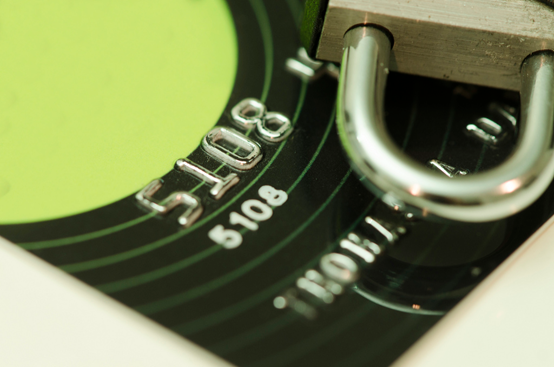<p style="text-align: justify;">Fraudsters can certainly be accused of plenty of things, but if the latest research into global fraud is anything to go by, a lack of persistence, or inactivity, is certainly not one. The annual Global Fraud Attack Index is hot off the press, and has revealed a 137 percent rise in fraud attacks across the board. The headline finding is that global fraud now affects $7 out of every $100 of online global retail spend.</p>
<h2 style="text-align: justify;"><strong>The Report’s Findings</strong></h2>
<p style="text-align: justify;">The downloadable 29-page report presents an extensive range of data that illustrates the true extent of the problem of digital fraud today. The report’s most prescient findings are summarised below:</p>
<ul style="text-align: justify;">
<li><strong>Online fraud has risen dramatically</strong></li>
</ul>
<p style="text-align: justify;">There has been a surge in the number of online frauds committed in 2015 and this trend has continued into the first quarter of 2016. The fraud attack rate has increased from quarter to quarter, rising by 11 percent from Q3 2015 to Q4 2015, and 26 percent from Q4 2015 to Q1 2016. In Q1 2016, there were 34 fraud attacks for every 1,000 transactions.</p>
<ul style="text-align: justify;">
<li><strong>The pattern of fraud has changed</strong></li>
</ul>
<p style="text-align: justify;">There has also been a deviation in the pattern of frauds. Typically, fraud rates drop in the fourth quarter of the year as Christmas approaches and the number of online transaction increases (the fraudsters cannot keep up with the surge in transactions). The rate of fraud attacks then rises again in the first quarter as the number of transactions declines. However, this year the fraud rate remained constant throughout the year.</p>
<ul style="text-align: justify;">
<li><strong>The cost of fraud has risen</strong></li>
</ul>
<p style="text-align: justify;">The potential cost of fraud also continues to rise. At the beginning of 2015, less than $2 out of every $100 spend online was subject to a fraud attack. By Q1 2016, this had risen to $7.3 out of every $100. This increase could put a serious dent in retailers’ profits.</p>
<ul style="text-align: justify;">
<li><strong>A change in the method of attack </strong></li>
</ul>
<p style="text-align: justify;">The types of attack the fraudsters are commonly using has also seen a shift. Last year it was botnets (a network of private computers infected with malicious software) that accounted for 34 percent of all attacks. This was followed by account takeovers at 17 percent and location manipulation at 10 percent. In Q1 2016, botnets accounted for 79 percent of all attacks, with account takeovers dropping to just 4 percent.</p>
<h2 style="text-align: justify;"><strong>The Cost to Customers</strong></h2>
<p style="text-align: justify;">As well as the growing regularity of fraud attacks, the tactics used by the fraudsters are also becomingly increasingly intelligent and sophisticated. Attacks on digital goods are now the most common type of fraud, and customers are continuing to be caught out despite the additional security measures being put in place.</p>
<p style="text-align: justify;">As security becomes more stringent, customers can become frustrated by the measures they have to go through simply to complete a transaction online. For many customers, the inconvenience caused by security measures can cause them to change their brand loyalties and even cancel their accounts, and this clearly has an impact on a merchant’s bottom line.</p>
<h2 style="text-align: justify;"><strong>The growing Problem of Phishing Scams</strong></h2>
<p style="text-align: justify;">Another area online consumers have to be increasingly aware of are phishing scams. In this case, the fraudsters send spoof messages to members of the public to direct the user to enter their details at a fake website.</p>
<p style="text-align: justify;">The South African financial services provider Wonga was recently the victim of such a scam when fraudsters sent members of the public messages purporting to be from the lender. The recipients of the message were urged to pay an upfront fee in return for a loan of R150,000 (an amount Wonga does not lend) at 3 percent APR. Of course, in this case, instead of providing the loan, the scammers simply took the upfront payment, and the users’ bank details, and ran.</p>
<h2 style="text-align: justify;"><strong>How can Customers Protect themselves?</strong></h2>
<p style="text-align: justify;">There are a number of measures customers can take to protect themselves from the growing number of digital scams that are defrauding innocent members of the public. This includes:</p>
<ul style="text-align: justify;">
<li>Only ever making payments through websites with a secure payment gateway;</li>
<li>Never replying to an email with confidential or sensitive information. Legitimate organisations will never ask for this type of information over email;</li>
<li>Never clicking links in an email to connect to a website;</li>
<li>Never submitting confidential information via forms embedded in emails;</li>
<li>Never being pressured into making a purchase or sending sensitive information by anyone, no matter who they may claim to be.</li>
</ul>

Latest Report Shows Digital Fraud Continues To Rise
